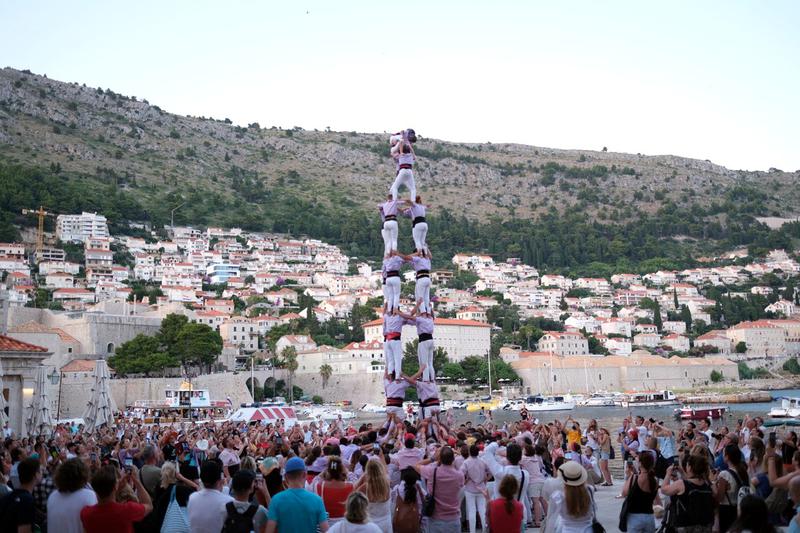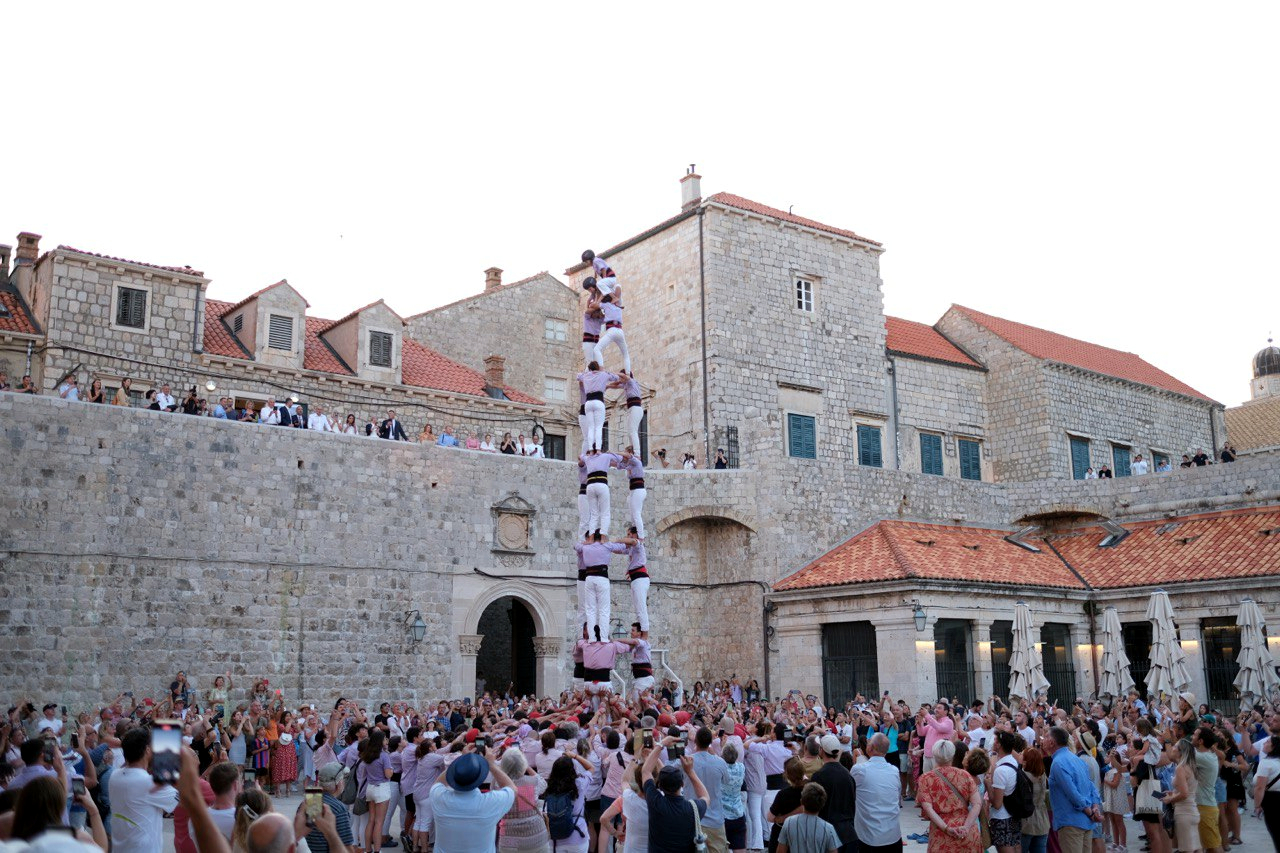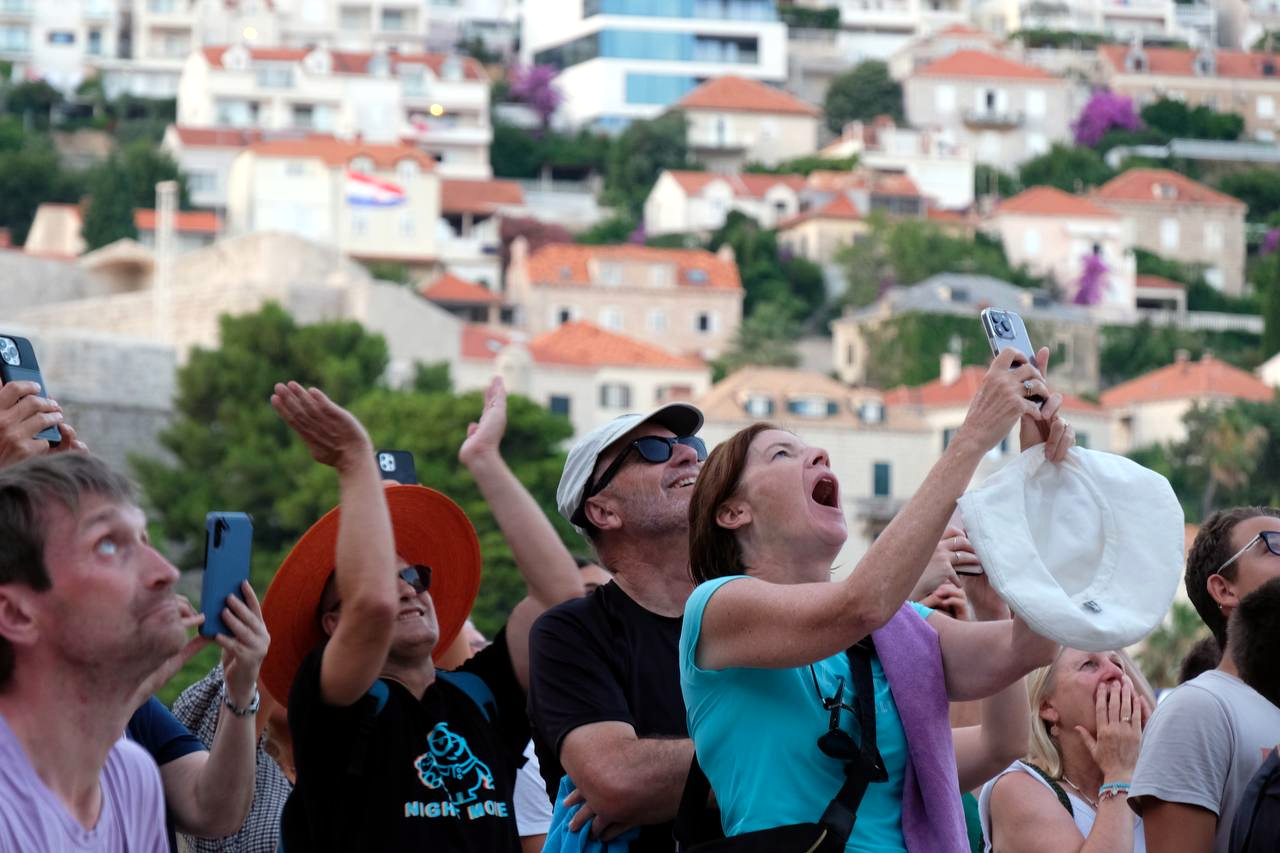Castellers: 'Minyons de Terrassa' build human tower in Balkans
Catalan traditional show takes place in Dubrovnik, Sarajevo, and Mostar

'Els Minyons de Terrassa,' one of the most important groups performing Catalonia's human towers, Castellers, is bringing the tradition to the Balkans.
From July 7 to 12, the purple group, in reference to the color of their shirts when doing the castells, over 200 team members are performing in Croatia and Bosnia Herzegovina to mark the 32nd anniversary of the Yugoslavian war.
The first castell rose on Saturday in Dubrovnik's old town after a small parade that saw the 'malves' managed to construct a seven-tier tower with three people in each, a 'tres de set, for those into the jargon.

The Minyons de Terrassa also managed to construct two pillars of 4 and 5 tiers, and then a 'tres de vuit' and the 'quatre de vuit,' two other towers with eight tiers in total. All of the performances took place in front of several European foreign ministers and ambassadors.

On Sunday, there will be a double performance in Sarajevo, and on Tuesday, in Mostar.
What are 'castells'?
Catalonia's 'castells' were declared an intangible heritage of humanity by UNESCO in 2010.
Large 'colles' form tiers of differing numbers of people standing on the shoulders of those below them.
Built to the sound of 'gralla' flutes and drums, human towers are only complete once a helmet-donning child called the 'enxaneta' ascends to the very top of the structure and raises their arm.
"Doing 'castells' has been a popular activity for more than 200 years and they are always associated with traditional celebrations such as ('festa major') village fairs," Ignasi Escamilla, of the Catalan human tower groups association, told Catalan News in June 2022.
According to Escamilla, however, 'castells' are more than just a thing of beauty: "They are a good example of an ideal society. It's the achievement of common goals obtained thanks to the cooperation of different team members."
Listen to our latest Filling the Sink podcast episode to learn more about 'Castells':